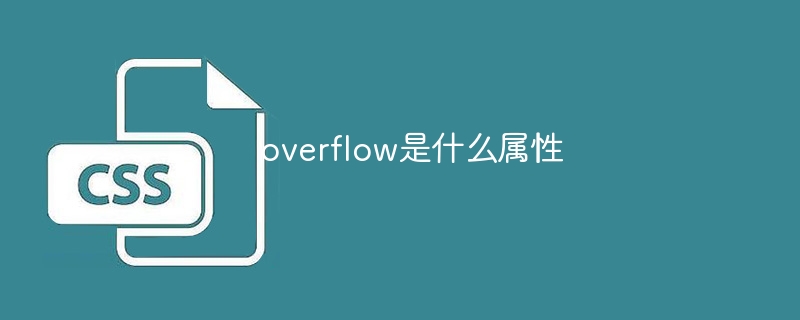
overflow is a css property. Used to control how the element content overflows, specifying how it should be handled when the element content exceeds its specified size or container size. When the text content in the element is too long, you can set the overflow attribute to hidden to hide the excess part to prevent damaging the layout. When the content in the element exceeds the size, you can set the overflow attribute to scroll or auto to create a An area with scroll bars that allows users to scroll through content, etc.

# Operating system for this tutorial: Windows 10 system, Dell G3 computer.
Overflow is one of the CSS properties used to control how element content overflows. It is used to specify what should be done when the content of an element exceeds its specified size or container size.
The overflow attribute has the following possible values:
1. visible: default value. When content exceeds the dimensions of an element, the content overflows the element and covers other elements. This means that overflowing content will appear outside the element, potentially breaking the layout.
2. hidden: When the content exceeds the size of the element, the excess part will be cropped and hidden and will not be displayed outside the element. This prevents the content from overflowing and ruining the layout, but may also cause the content to be truncated and not fully displayed.
3. scroll: When the content exceeds the size of the element, a scroll bar will be displayed so that the user can scroll to view the exceeded content. Even if the content is not exceeded, the scrollbars will appear, but are disabled.
4. auto: When the content exceeds the element size, scroll bars will be automatically displayed as needed. If the content is not exceeded, the scrollbar will be hidden. This is the most commonly used value. It will automatically choose whether to display scroll bars based on the actual content.
In addition, there are some overflow-x and overflow-y properties that can control overflow processing in the horizontal and vertical directions respectively. The values of these two attributes are the same as overflow.
Use the overflow attribute to achieve some common effects, such as:
1. Prevent text from overflowing: When the text content in an element is too long, you can set the overflow attribute to hidden to prevent it from overflowing. Partially hidden to prevent breaking the layout.
2. Create a scrolling area: When the content in the element exceeds the size, you can set the overflow attribute to scroll or auto to create an area with scroll bars so that users can scroll to view the content.
3. Hidden element overflow: When an element is nested in a parent container with a fixed size, the overflow attribute can be set to hidden to prevent the element content from overflowing the parent container.
It should be noted that the overflow attribute is only effective for elements with specified dimensions (such as width and height set) or max-height and max-width set. For elements with no specified size, the default overflow value is visible.
To summarize, the overflow attribute is used to control how the element content overflows. By setting different values, you can achieve effects such as content overflow hiding, scrolling display, etc. to adapt to different layout needs.
The above is the detailed content of What is the attribute of overflow?. For more information, please follow other related articles on the PHP Chinese website!




